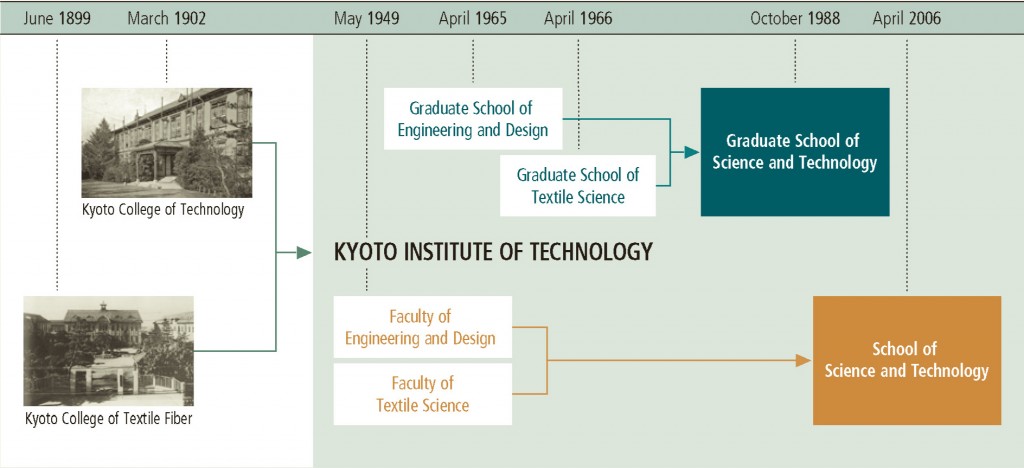History
The history of KIT began over 100 years ago with two forerunner institutions; one specializing in engineering, design and the applied arts and another in sericulture, spinning and weaving. Throughout their half century of influence, both predecessor institutions produced human resources vital to the demands of the times. They aided modernization and conserved the applied art traditions of Kyoto at the point of industrialization. With post-war educational revision in 1949, these forerunner schools became the undergraduate Faculty of Engineering and Design and the Faculty of Textile Science. This was the birth of Kyoto Institute of Technology as we know it. KIT responded to post-war social and industrial needs by modernizing and reorganizing existing courses during this period of national reconstruction and subsequent rapid economic growth. A three-year evening program, the Technical College, ran from 1951 making university programs available to persons who worked during the day. To accommodate a growing student body, the Faculty of Textile Science joined the Faculty of Engineering and Design at our current northeast Kyoto location in 1968. A master’s program was established in the mid-1960’s for each faculty. In 1988, the two master’s programs merged and a doctoral level was added. Another change taking place at that time was the gradual discontinuation of the Technical College in favor of evening programs within the engineering and textile faculties.
In 2004, with the advent of the National University Corporation Law which increased the autonomy of national tertiary institutions; KIT planned a reorganization. Faculty were to be separately organized into departments to enable flexibility in interdepartmental teaching. All ten undergraduate programs were to be consolidated under the single faculty of the School of Science and Technology and graduate programs were to branch into twelve master’s and four doctoral programs. This went into effect in 2006.
KIT encourages students to participate in internships, experience the realm where design and science converge and take part in projects with our partner universities abroad. KIT also promotes collaboration in business and research with industries. The close rapport maintained with area industries over the past 100 years has allowed us to continue to have our fingers on the pulse of Kyoto design and technology.


